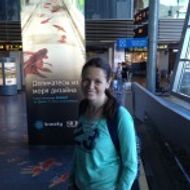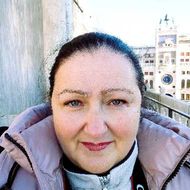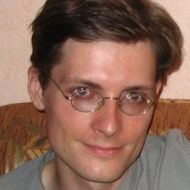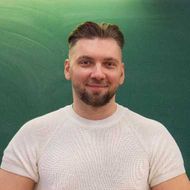- A
- A
- A
- АБB
- АБB
- АБB
- А
- А
- А
- А
- А
- Национальный исследовательский университет «Высшая школа экономики»
- Факультет математики
- Мероприятия
- Конференция, посвящённая 65-летию Сергея Константиновича Ландо
-
Факультет
-
Образование
- Образование
- Бакалаврские программы
- Магистерские программы
- Аспирантура
- Программа Math in Moscow
- Программы для учителей и школьников
- Майнор «Математические структуры»
- Календарь школ
-
Подразделения
- Базовые кафедры
-
Научные подразделения
-
- Международная лаборатория теории представлений и математической физики ВШЭ
- Международная лаборатория кластерной геометрии
- Лаборатория алгебраической геометрии и ее приложений
- Международная лаборатория зеркальной симметрии и автоморфных форм
- Научно-учебная лаборатория сложных сетей, гиперграфов и их приложений
- Лаборатория математического образования
-
-
In Memoriam
- Мы помним
-
Виртуальная доска объявлений
Адрес: 119048, Москва,
ул. Усачёва, 6
тел. (495) 916-89-05
тел. (495) 772-95-90 *12725
E-mail: math@hse.ru
Учебный офис:
mathstudyoffice@hse.ru
тел. (495) 624-26-16
тел. (495) 772-95-90 *12713
Telegram каналы:
Канал Студсовета Матфака - @mathhse_council
Канал Деканата - @mathhse_news
Канал Учебного офиса ФМ - @mathhse_study
Канал Матфак внеучебка - @mathhse
ДПО факультета математики:
dpo-math@hse.ru
Проект «Математическая вертикаль»:
math.vertical@hse.ru
ЛМШ факультета математики - Летняя школа для школьников:
math.vertical.school@hse.ru
Редакторы сайта факультета:

Конференция, посвящённая 65-летию Сергея Константиновича Ландо
Конференция будет проведена онлайн в сервисе ZOOM 10 июля в 14:00 - 18:00 (Московское время).
Приглашение на конференцию придёт после регистрации: https://math.hse.ru/polls/376187065.html
Пожалуйста, используйте свои настоящие имя и фамилию для входа на конференцию.
ПРОГРАММА:
14:00 Alexander Zvonkin (LaBRI, University of Bordeaux)
Title: Construction of regular maps from their small quotients
Abstract: Every bicolored map may be represented by a triple of permutations (x,y,z) acting on the set E of edges and such that xyz=1. Here the cycles of x are black vertices, the cycles of y are white vertices, and the cycles of z are faces. To every map one can associate two groups: the monodromy group G=<x,y,z>, and the automorphism group H. A map is called regular if these two groups are isomorphic. In this case the set E of edges can be identified with the group, and this group acts on itself by multiplications. Thus, a construction of a regular map, even a large one, may be reduced to a construction of a group with desired properties, and this group may be constructed as a monodromy group of another map, often much smaller.As an example of special interest we will consider Hurwitz maps. In 1893, Hurwitz proved that for a map of genus g>1 the order of its automorphism group is bounded by 84(g-1). Hurwitz maps are interesting not only because they are very symmetric but also because they are very rare. Marston Conder (Aucland) classified all regular maps of genus from 2 to 101. Their number is more than 19 thousand, and only seven of them are Hurwitz.This is a joint work with Gareth Jones (Southampton).
15:00 Sergei Chmutov (Ohio State University)
Title: Symmetric chromatic function in star basis
Abstract: The Hopf algebra approach to Stanley's symmetric chromatic function of graphs directly leads to a simple construction of bases of the algebra of symmetric function. Namely, for each value of $n$ pick a connected graph with $n$ vertices. Then the symmetric chromatic functions of these graphs form a basis of the algebra of symmetric function. As a family of such graphs we choose stars with $n$ vertices. Those are the trees which have one central vertex of degree $n-1$ connecting with $n-1$ leaves. I give a simple closed formula discovered by my student Ishaan Shah expressing the symmetric chromatic function of a graph in terms of this basis of symmetric chromatic function of stars.
16:00 Dimitri Zvonkine (CNRS)
Title: The locus of curves with abelian differentials and Witten's r-spin class
Abstract: In the moduli space of genus g curves with n marked points we consider the locus of curves carrying a holomorphic differential with zeros of prescribed orders at the marked points. Our goal is to find the Poincaré dual cohomology class of this locus. At present this problem is not fully solved, but there is a conjecture relating the cohomology class in question to Witten's r-spin class and an approach that is likely to lead to a full proof.
17:00 Maxim Kazarian (HSE)
Title: Quasirationality of weighted Hurwitz numbers
Abstract: The so called weighted Hurwitz numbers form a family that includes, for particular parameter values, various kinds of Hurwitz numbers such that usual ones, monotone, r-spin numbers, numbers of dessins d’enfants and Bousquet-Mélou–Schaeffer numbers. Besides, all these numbers include both simple versions as well as orbifold or double versions. These numbers are collected into generating series called n-point correlator functions. It turns out that these functions become rational after a suitable change of coordinates implied by the equation of spectral curve. This fact implies that each n-point function can be computed explicitly in a closed form. The goal of the talk is to explain the precise meaning of these assertions.
- О ВЫШКЕ
- Цифры и факты
- Руководство и структура
- Устойчивое развитие в НИУ ВШЭ
- Преподаватели и сотрудники
- Корпуса и общежития
- Закупки
- Обращения граждан в НИУ ВШЭ
- Фонд целевого капитала
- Противодействие коррупции
- Сведения о доходах, расходах, об имуществе и обязательствах имущественного характера
- Сведения об образовательной организации
- Людям с ограниченными возможностями здоровья
- Единая платежная страница
- Работа в Вышке
- ОБРАЗОВАНИЕ
- Лицей
- Довузовская подготовка
- Олимпиады
- Прием в бакалавриат
- Вышка+
- Прием в магистратуру
- Аспирантура
- Дополнительное образование
- Центр развития карьеры
- Бизнес-инкубатор ВШЭ
- Образовательные партнерства
- Обратная связь и взаимодействие с получателями услуг
-
http://www.minobrnauki.gov.ru/
Министерство науки и высшего образования РФ
-
https://edu.gov.ru/
Министерство просвещения РФ
-
http://www.edu.ru
Федеральный портал «Российское образование»
-
https://elearning.hse.ru/mooc
Массовые открытые онлайн-курсы
- © НИУ ВШЭ 1993–2026 Адреса и контакты Условия использования материалов Политика конфиденциальности Карта сайта
- Редактору





